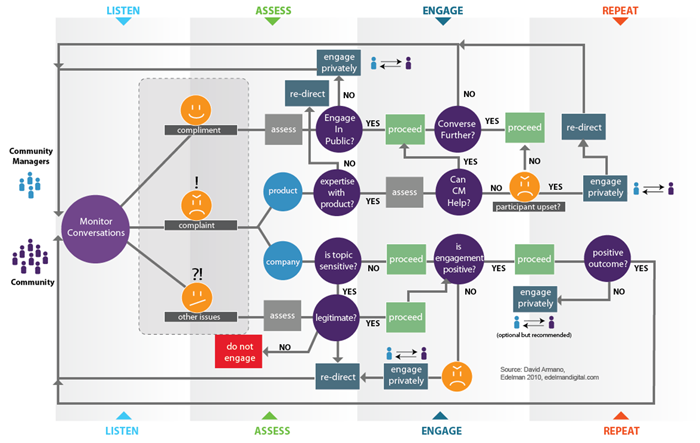20 Best Practices for Managing Your Online Reputation II: Employer Branding and Communication
In our previous post on managing your online reputation, we talked about identifying the potential actors and drivers of your brand. This week, we cast the spotlight on a brand's most important asset - its employees.
The value of an employee to a brand's online reputation cannot be understated. For some, employees can account for 15 - 25% share of voice on social media. How can companies tap into this resource to enhance their online reputation?
6. Build a strong employer brand
"Employer branding" is not a new concept. With the rise of social media platforms such as Glassdoor enabling users to freely share working (and even interview) experiences with one another, brands need to be vigilant in the way they portray themselves not only to current employees but also prospective employees.
For example, is your company a fast-paced startup that thrives on ambitious, social media savvy employees? Or are you hiring for an established company that has honed its reputation as a steadfast, traditional institution over decades? Employers need to brand themselves accordingly so as to attract and retain the right talent.
7. Map your internal channels of communication
To keep employees informed and up to date about the latest developments and campaigns, employers can build an internal social network through three ways:
- Blogs
- Regular internal newsletters
- Intranet
8. Your employees = your brand
Thanks to social media, businesses and employees no longer exist in isolation. No matter the seniority, employee conduct on social media reflects directly on the brand, and sophisticated social listening can benefit HR departments in taking timely measures to identify employee advocates or mitigate potential crises in case of misdemeanours, especially at the frontline and executive levels.
Employee feedback on social media is another overlooked, yet nonetheless critical aspect of online reputation. Platforms like Glassdoor, where employee ratings contribute greatly to the perception of potential employees and partners provide a wealth of information.
What remains is for HR departments to consolidate this feedback, together with the traditional avenues of quarterly or annual reviews and in-house employee surveys, and then respond with revised policies or other appropriate measures.
9. Establish a communications flowchart
Regardless of department, each and every employee is a potential touchpoint for a brand's customer. Organisations would benefit from drawing a clear flowchart for employees to follow, in terms of who to get information from, what can or cannot be communicated to the public, and what measures to take in different scenarios.

10. Establish a rule-book for your employees
As the saying goes, prevention is better than cure. Brands can mitigate the repercussions of an online crisis by anticipating potential issues, as well as ensuring that their employees are clear on what can and cannot be shared with the public. This is especially important for tech companies, where key product developments must be kept confidential until the official launch date, in order to avoid imitation by competitors.

Key Marketing Concepts in 2017 I: Social Media
Written by Melissa Chue
Melissa is a digital advocate who loves diving into the latest trends in digital and social media. Since joining Digimind’s marketing team in 2015, she has written studies for over 15 industries in Asia Pacific. When she is not telling stories about data, Melissa can be found exploring her favourite cafes and hangouts on Instagram @chuepachups.
